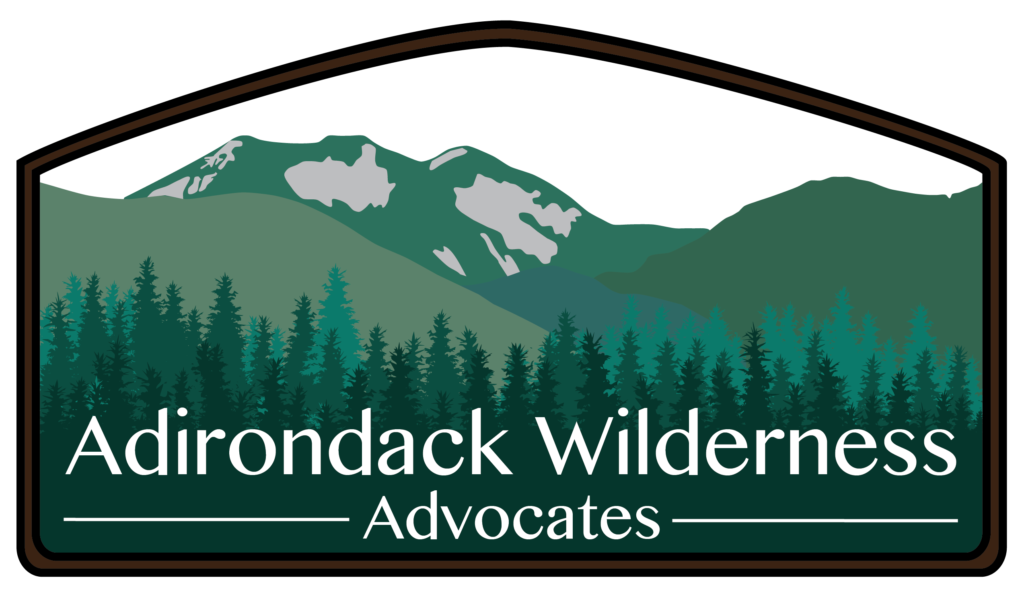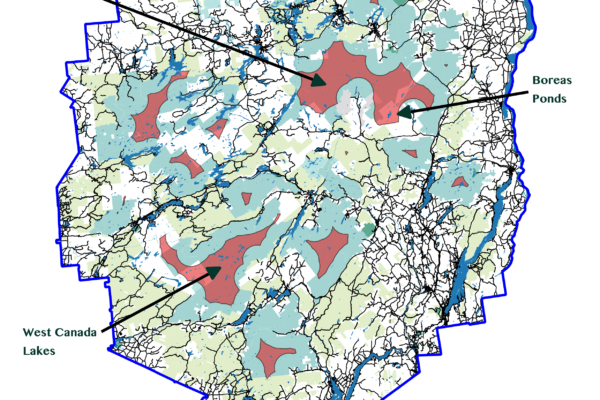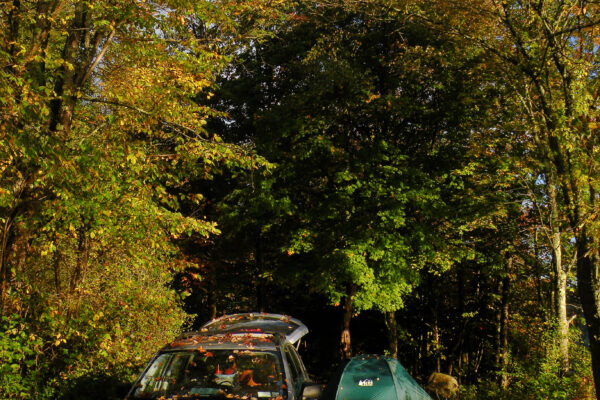Every year, Adirondack Wilderness Advocates has a booth at the Adirondack Sports Expo, where we highlight a current campaign, engage the public and have a great time talking with people about the their passion for wilderness. The weekend of March 18th we attended the 2023 Summer Expo in Saratoga Springs, where we shared information on our current campaign: protecting remoteness in the Forest Preserve.
Protecting and expanding remoteness is an AWA core value, and we have several projects underway that specifically challenge the State of New York to better protect remoteness, which is a rare and threatened resource, even in the Adirondack Park. The timing for these projects is very important, because the State is currently considering an array of policies which will have a significant effect upon remoteness. There has not been as important a time to step up for wilderness since the Boreas campaign.
First, the Department of Environmental Conservation (DEC) is in the middle of a formal process to develop new guidelines for trails, including snowmobile trails. AWA is a member of the DEC’s Trail Stewardship Group, convened to create these guidelines, and we are concerned that issues around remoteness are not being fully addressed. Second, the DEC is commencing a Central High Peaks Visitor Use Management Project that will change how the State manages wild places. AWA was invited to be a member of the VUM stakeholder group which will advise on this project. The new wilderness management paradigm being piloted promises to be a real benefit to the Park, but it must have the right core values, including protection and expansion of remoteness as a fundamental desired condition. Finally, the Adirondack Park Agency (APA) is currently reviewing their policy on roads and “no material increase” (NMI) of roads in Wild Forest areas, and the alternatives currently under consideration pose a critical threat to remoteness. In defiance of both the letter and spirit of the State land Master Plan (SLMP), approval of the wrong alternative could lead to an expansion of public roads in the Forest Preserve.
In response to these State actions, AWA will be launching a remoteness campaign in three parts. First, we are submitting a proposal to the APA calling upon it to develop a formal policy on remoteness that can measure and better protect it. Second, AWA is organizing a call to action to oppose any attempt by the APA to exceed the road mileage in Wild Forest that is allowed by the SLMP. This has been a long-term problem with the APA, and the current NMI alternatives will make the problem worse, as AWA Vice-Chair Bill Ingersoll explained in a recent essay.

The third part is public education, outreach and input on remoteness, which brings us to the Sports Expo. AWA produced a video with a discussion about remoteness, which we showed at our booth, along with maps and some questions we posted to get conversations going. As a grass roots organization, we value interaction with fellow Adirondack lovers more than anything else, so we had a lot of fun talking with the many folks who came by.
Our favorite question was “What is the most remote place you’ve ever been?” The broad range of answers highlighted the value of remote experiences and the unparalleled variety of adventures to be had in the Adirondacks. If there was a common thread in what people had to say, it was that the effort to get there was especially important! Distance from a road, either via a wilderness foot trail or off bushwhack trail, was a common denominator.
A few visitors named non-Adirondack places as their most remote experiences, including somewhere off the Green River in Wyoming, the wide open spaces east of Glacier National Park in Montana, and the Boundary Waters in Minnesota. But most picked a favorite Adirondack spot, and—wonderfully—none of the many comments named the same place. One person gave a lot of love to winding among the remote ponds of the Pharaoh Lake Wilderness, the collection of which, he suggested, should have a contest for being the buggiest. There is no surprise that the Five Ponds, the Siamese Ponds and the West Canada Lake Wilderness tracts each got a vote. The Cold River area earned a well-deserved nod. The south shore of Cranberry Lake got a specific mention, as did the Raquette Stillwater and territory west of the Miami River on Blue Ridge Mountain. All remote places indeed.
Other votes were less expected, including several nods to Wild Forest areas, which can certainly be as remote as any Wilderness. One enthusiastic bushwhacker described an off-trail approach to Vanderwhacker Mountain as especially rewarding: “from high spots on the tract it feels as if the entire dome of the Adirondacks is visible, with you in the center.” Another favored the Hammond Pond Wild Forest in the general area where the North Country National Scenic Trail will go. One vote went to the Sargent Ponds Wild Forest.
My favorite input was from a person who nominated the entire Northville-Lake Placid Trail. That in itself is no surprise: several portions of the NPT traverse the most remote areas of the Park. Somewhat more surprising was that her end-to-end trip was her first-ever experience backpacking. That’s close to me saying my first-ever piano recital was a Beethoven Piano Concerto. Add the information that her sojourn was her honeymoon and we have an experience that qualifies as remote in all kinds of ways, to say the least!
These places and many more need the greatest protection we can give them from the encroachments of motorized traffic, noise, invasive species and more. Stay tuned to our web site and email announcements as we develop our campaign this year. We will be calling upon you to help us protect the precious resource that is remoteness in the Adirondack Park.



